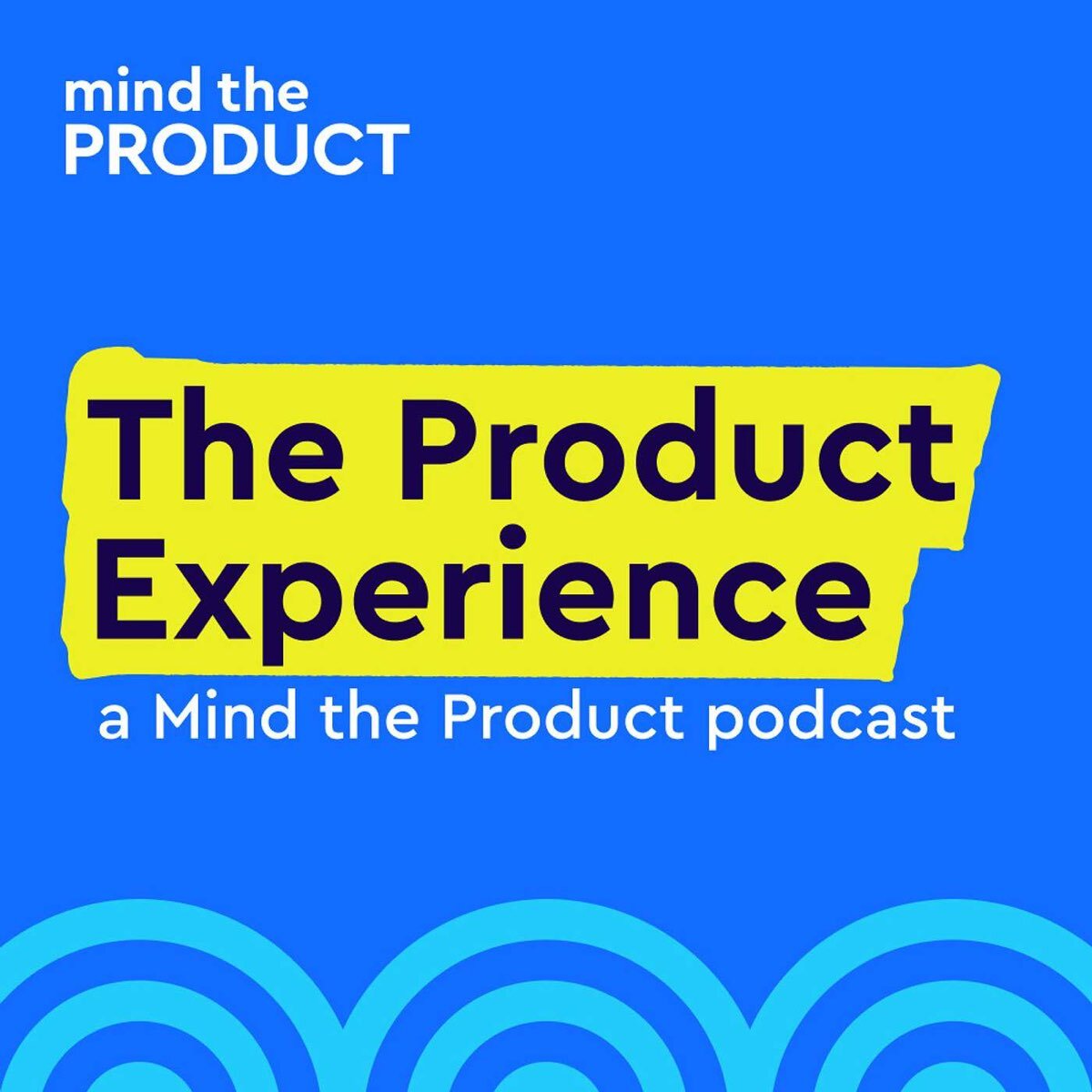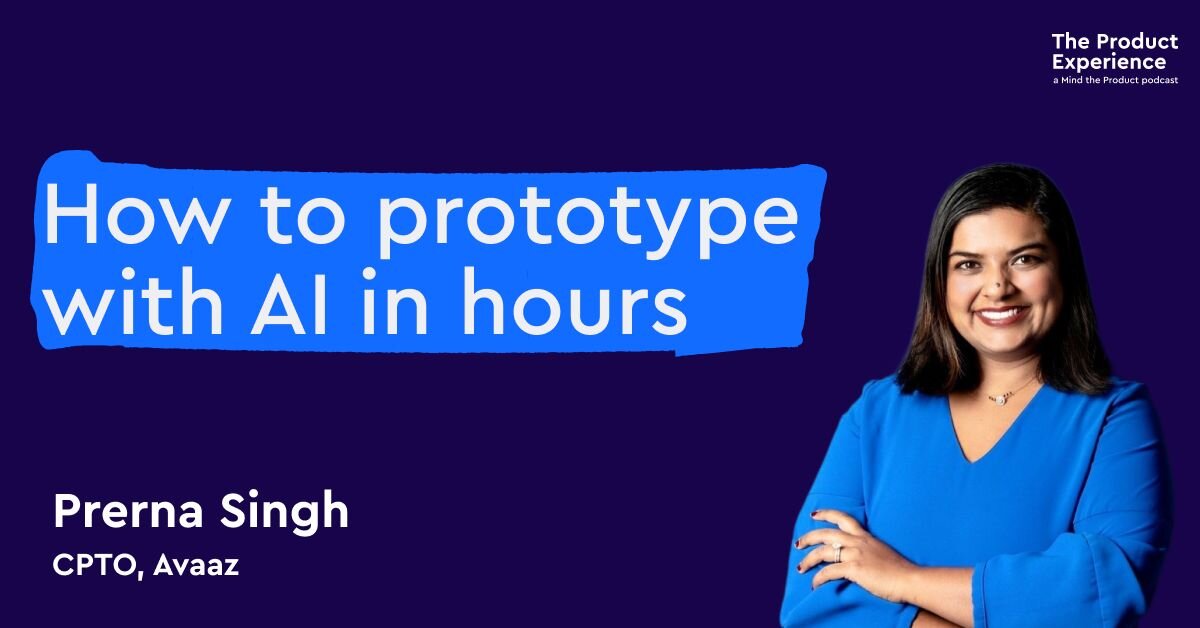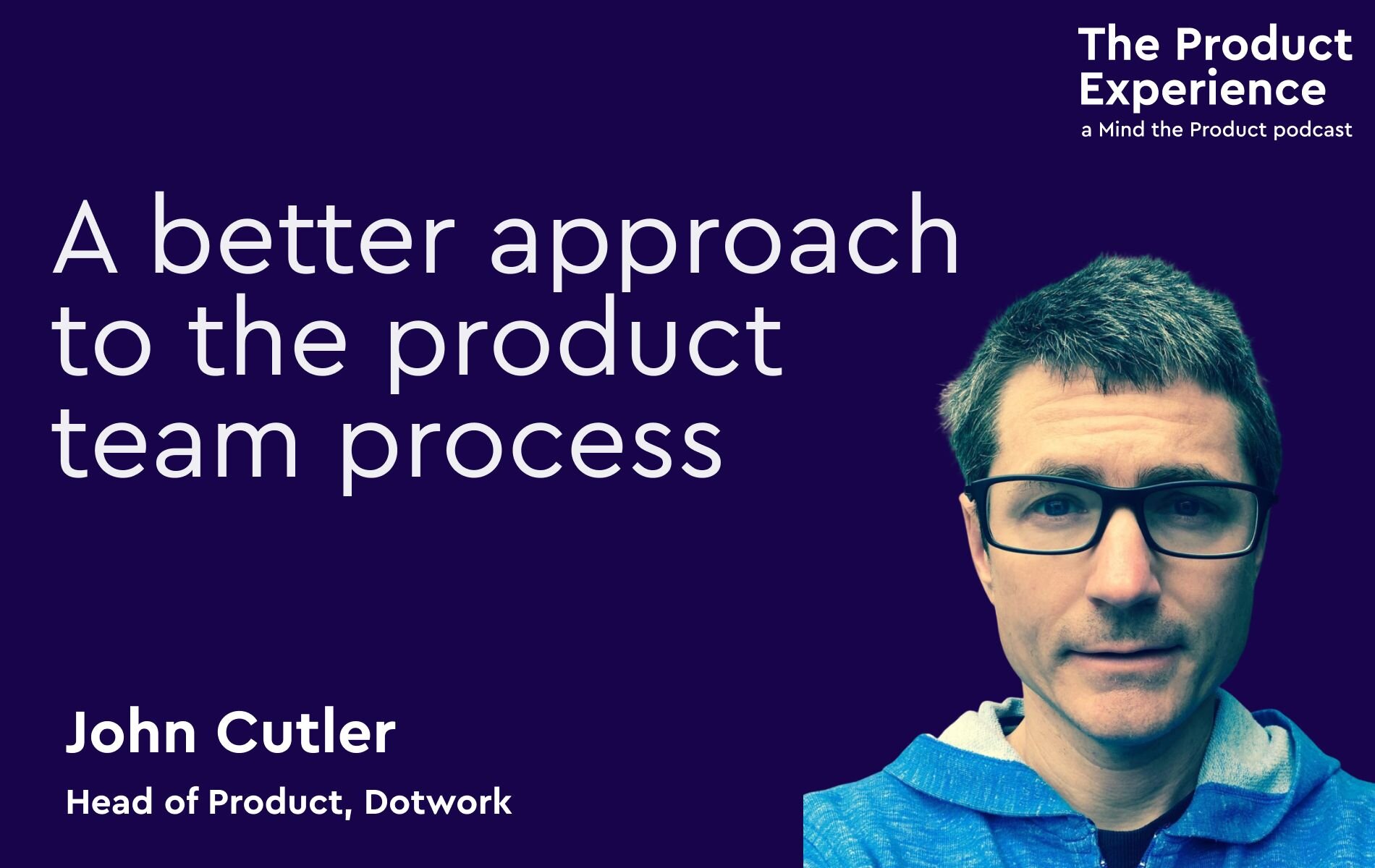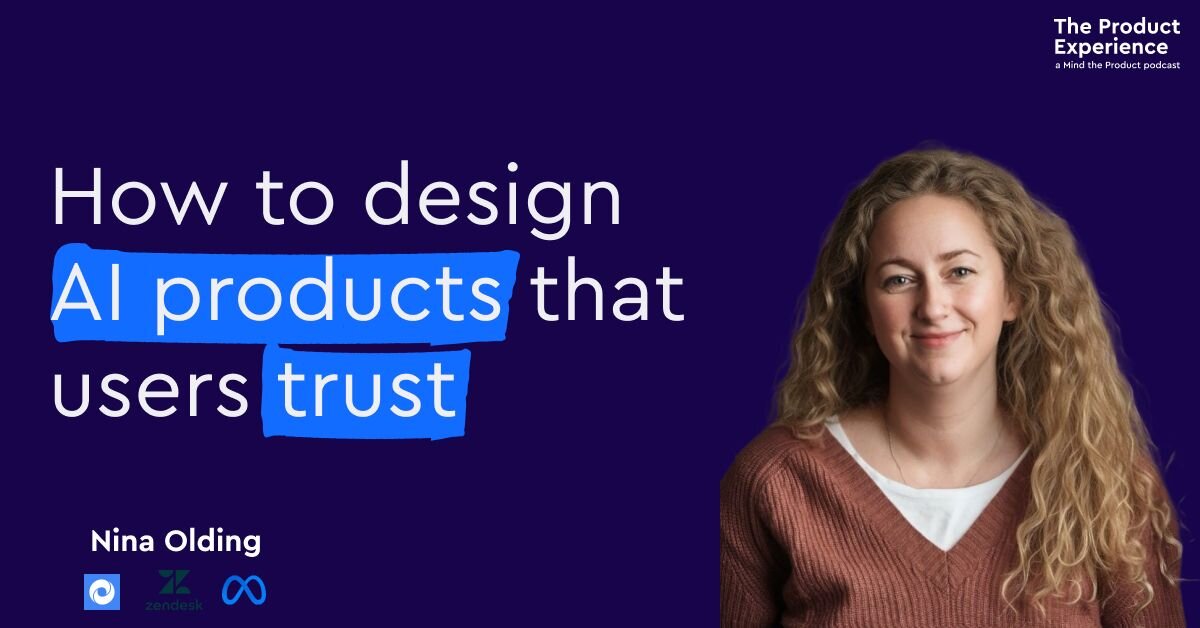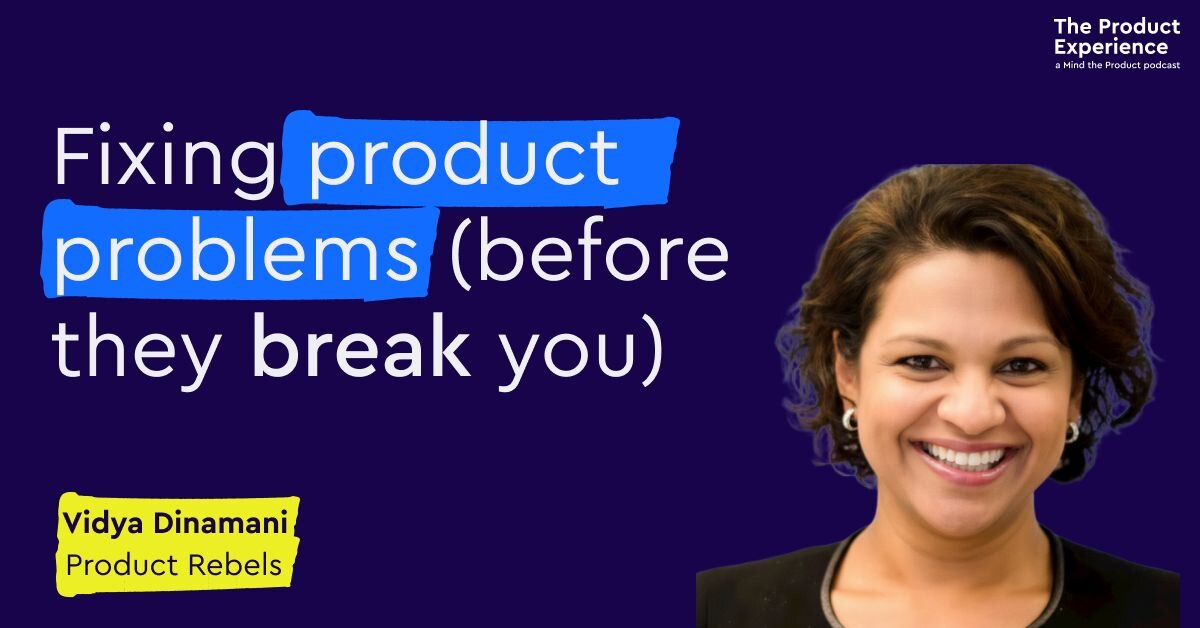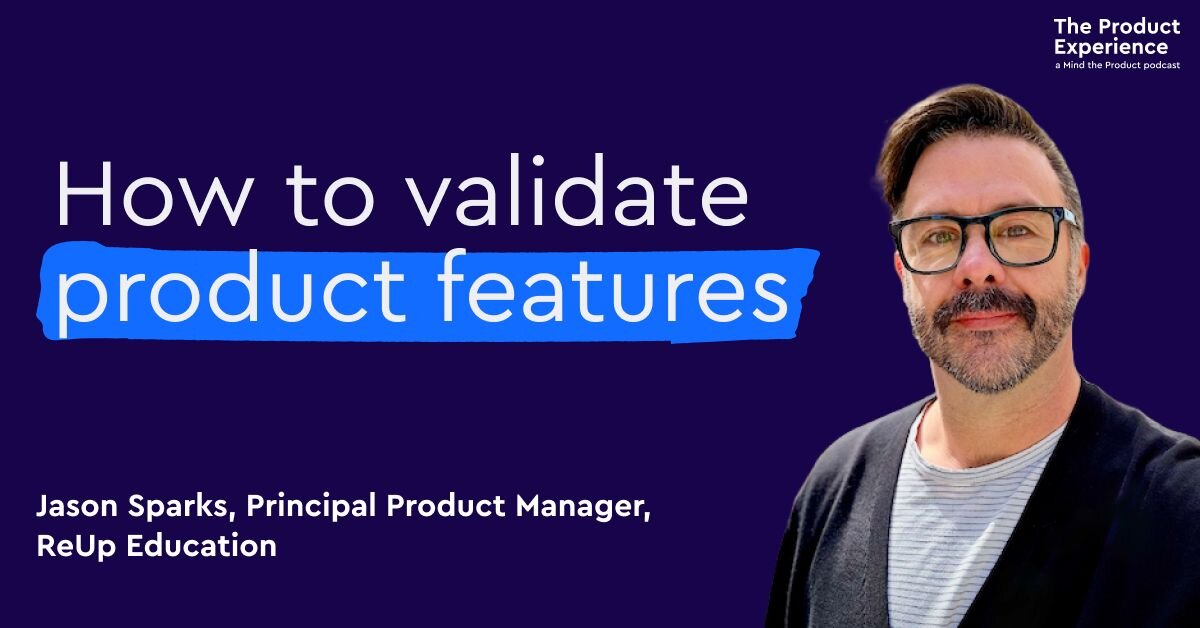In this episode, we cover:
- 00:00: The importance of Content Design in UX
- 09:29: Content design and User Experience
- 18:35: Content Design and Evaluation Strategies
- 28:53: Accessibility and Content Design Importance
Featured links:
- Follow Erica on LinkedIn and Twitter
- Erica's website
- Buy Erica's book 'Strategic Content Design – Tools and Research Techniques for Better UX'
- The Content Design Manifesto
- Screaming Frog SEO Spider
Episode transcript
Randy Silver:
Lily, I love everything about making this podcast. I love talking to our guests, I love hanging out with you and learning all kinds of new stuff.
Lily Smith:
Yeah, me too. That's all ace, but there's one thing about it that isn't quite as much fun.
Randy Silver:
Just what did I miss? Didn't I cover everything what could possibly be left?
Lily Smith:
Randy, seriously, these intros, they are the hardest part of the whole process.
Randy Silver:
Well, hmm, over the years, you know, we've either outsourced the other parts of the job that we don't like or gotten some advice from experts. Maybe we should do that for the intros too.
Lily Smith:
Oh, okay, yeah, good idea, and what luck that we've got one scheduled for this week. How funny.
Randy Silver:
Yes, look at us foreshadowing and we've got an old colleague of mine to chat with this week. Erica Jorgensen and I've both spent time at Amazon a long while back, and she's now a staff content designer at Chewy and the author of the new book Strategic Content Design Tools and Research Techniques for Better UX.
Lily Smith:
And if you buy it now from Rosenfeldmediacom, you can get 15% off with the code MTP15.
Randy Silver:
On with the chat.
Lily Smith:
The product experience is brought to you by Mind the Product. Every week on the podcast we talk to the best product people from around the globe. Visit mindtheproductcom to catch up on past episodes and discover more.
Randy Silver:
Browse for free or become a Mind the Product member to unlock premium content discounts to our conferences around the world and training opportunities. Mind the Product also offers free product tank meetups in more than 200 cities, and there's probably one near you. Erica, thank you so much for joining us this week. It's great to have you here. Thank you so much, Randy.
Erica Jorgensen:
I am so excited to be here and to be here with both you and Lily.
Randy Silver:
So I know you because we worked together, oh God, a million years ago, and we're not going to tell anyone exactly how many millions. But for anyone who doesn't know you already, can you tell us a little? What are you doing these days and how did you get into the wonderful world of, well, product and content strategy? Sure, yeah, it has been a while.
Erica Jorgensen:
I will just say that I know you from my time at Amazon, when it's pretty much a startup. I worked at Amazon when they sold only books and they needed someone to write a whole lot of book reviews and author interviews, so that was, someone had to do it and that was my job. I have worked for a number of websites in addition to Amazoncom, including Expedia, nordstromcom, microsoft, for about five years. I'm currently with Chewycom, which sells pet supplies and is a great, great place to work. Yeah, I'd say I kind of fell into it after, after journalism. I think what I was doing at Amazon although I didn't know what the term didn't exist at the time content designer, content strategy did not exist when I worked at Amazon in the 90s, but that's pretty much what we were doing Establishing information architecture, helping customers go from point A to point B, mostly at Amazon, I was getting them to the checkout, to the shopping cart, and getting them to check out successfully and with the least amount of friction possible. Yeah, I think I've always been a word nerd, and the person who would create style guides for companies created the style guide for Nordstrom, was a leader in the creation of it for Expedia, and I also worked at a nonprofit called Primera Blue Cross. If you can make content for health insurance in the United States, you can make content for anyone. And yeah, it was really hard. But I think what I like about it is I collaborate with people across the company, not just in the product realm product managers, engineers, product designers, but also the marketing team, the legal team, leadership. I love presenting to senior leadership, decision makers. I love presenting to senior leadership to show them the impact of the content work that I work on or that my teams are working on, and how it's saving the company money or making the company more money, or both, which is music to their ears. So it's sometimes a labor of love. I think content teams are often understaffed, which is pennywise and pound foolish, but it's. I think it's exciting to see the power of the words when you know you're making someone's life a little easier by making a website or app easy to understand and easy to use.
Randy Silver:
That's fun, and you've just written a book called Strategic Content Design Tools and Research Techniques for Better UX. So I'm going to start with a really dumb and obvious question what counts as content? Is it just?
Erica Jorgensen:
words, is it? Phrases, is it?
Randy Silver:
words and images used together. What is content? What does a content designer actually do for those of us who haven't worked?
Erica Jorgensen:
with it. That is a smart question, I'd say my book focuses primarily on words, words and phrases and messaging. I do think content does include things like video imagery all that the gestalt of the user experience but my book predominantly focuses on words. How do you know what words are clear to your audience? How do you know what's not clear and why? Why are these words working and why are they not working? And that's the quantitative research figuring out what percentage of your audience is clear on this or has a certain emotional reaction. There's, I think, nine types of content research that I get to in the book Preference tests, clarity tests, comprehension, that kind of thing. But it's the why. Why are words working or not? That's often gobsmackingly shocking and very, very valuable for improving the user experience. So I call it the one-two punch. You usually do a quantitative question, a multiple choice or a scale question, followed by tell me why. Tell me a little bit more. And that's where the the head exploding emojis often happen at that point.
Lily Smith:
Yeah, so who, what type of businesses need a content designer? Is it any type of tech business or is it ones that you know have a lot of content that they need to convey the story or the message or the value proposition to the customer? So I imagine there's sort of like varying levels of content for different types of business.
Erica Jorgensen:
I'd say any company that wants to survive needs content design, needs content strategy. Or, if you want to be more competitive, be more successful than your competitors. Like I mentioned, content design staffs are not adequately staffed. I've seen, I've been on teams where there's something like a ratio of 17 product designers to one content designer, which is not ideal at all. Usually, a one-to-one ratio is what I would recommend or what I find to be the recipe for success. Yeah, I think the companies that I've worked for that are successful, like Amazon, expedia, microsoft they hire content designers to make sure the words are effective, and companies that aren't as successful don't have them on staff. I don't know how else to say it. It's really interesting to start at a company that has, or to work for a team or an organization that has, what I call content debt. If they hadn't had they have not yet had content designers or content strategists on staff, you can tell. You can tell there's inconsistencies, or the same word is used, words are used inconsistently or erratically, or the content is wordy, awkward, all sorts of things, I think, using plain language, which is something that Sarah Richards is a proponent of in her book simply titled Content Design. She is in the UK. I think when content is clunky, syntactically awkward, overly long and strangely not detailed enough, often the details that people need to succeed to do their jobs to be done isn't there because content has been shoehorned in by a designer who used lorem ipsum in the wireframes. When you get customer friction, it's amazing. It's amazing how, when you have a content designer working on your staff, things just work better.
Lily Smith:
Yeah, and Erica, you mentioned there a lot of things that can go wrong when you don't have a content designer. I'm assuming the outcome of that is your website or your app or whatever it is just doesn't perform as well as you would want it to. But also, you mentioned there a ratio of 17 product managers to one content designer is not a good ratio. So is there like a good law of ratio?
Erica Jorgensen:
Yeah, I think the teams that I've worked on that have driven the most impact, or the teams that I've heard from, whether I've given a workshop or presented at a conference or whatever, and people come to me and say look at what I did with doing content design in a smart way. When you have a one to one to one ratio of content design, product design and UX research, that to me is like three legs of a stool where the magic really happens, I think. And to your earlier point, it's not just that the content, the user experience, works better, but you're also reducing risk. I've seen teams publish information that's either not accurate or is risky from a legal or compliance perspective, or error messages that are written by your engineering team. That's just. You can spot one from a mile away. They're either wordy or clunky or both, and just don't help people do what they need to do. And then you're gonna spike calls to your customer service team when people say I don't know what on earth this means. I need help. And then they text you or they get on your chat bot and ask for help. And then that's when the dollar bill sign starts flying around or the euro bill signs start flying around as it's expensive, when your customers can't do what they need to do and your audience is confused or, worse, offended. I've seen people create content that's offensive because they don't understand the word origins or they don't understand how to write in a sensitive, inclusive way that supports diversity and inclusion. All sorts of things can go wrong. Let me just put it that way. I think it's wonderful when content comes in at the start of a project and not seven, eighths of the way through and asked oh, this goes to engineering Tuesday. Can you make the content good? No, no, I cannot make the content good in three days. When you've been working on something for six months, no, I cannot. Or not to the degree to which the customer or audience deserves it, or for the support to support company business success. I cannot make content good in three days. And that, to me, brings everything home to good content as an engineering issue. If you don't want to have rework, if you want to prevent rework or if you don't want your sprint cycles to be completely hosed, bring in a content designer at the kickoff of a project so they understand the requirements. They can partner closely with design and product management and in engineering to make an awesome user experience. All those factors come into play and then you'll have better click through, better engagement, fewer calls to customer service all of that. I have an example in my book of someone who was working for a drone company and there was a word all over their website, all over their app. And when she started with the company you know when you start and you want to be seen as smart and you don't want to ask silly questions she didn't know what this specific term meant. On the website upper field she thought it. She wasn't really clear what it meant. It was a reference to managers, people who are like regional managers. There's hundreds, hundreds, if not thousands, of incidents of this or placements of this word throughout the user experience. It's in sales material, everywhere. It existed everywhere, and she didn't know what it meant, and so she did a content study using an online survey tool asking customers, current customers do you know what this term means and would you choose something different, something potentially more clear, to replace it? And something like 75% of her customers were like I don't know what the heck this means. Some of them, worse, thought it actually upper field. They thought it meant upper. They thought it was a directional meaning, like a dropdown, like in the upper right corner of your phone upper fields. They were so confused they didn't know it was a thing. The bummer for her company is it was an upgrade. It was something that they wanted people to upgrade to to get more management. They wanted to make more money by having this special feature as part of their offerings, but people did not know what this term meant. They sure didn't want to pay more money for it if they didn't know what it meant. No one in her company knew what it meant, but no one wanted to admit that. They thought it was awkward. It was written by the company founder. He thought this was the right term to use. He didn't have a content designer and staff and so he took his best stab at it, but it's causing friction throughout the user experience. Another person felt that, shared in their qualitative feedback for this online survey, that they felt it was the classist, that just had something to do with upper class, lower class. Upper field was somehow superior, but it felt classist to them. So people are confused. They're sure not going to pay for it. They're, you know, a little bit offended when they changed that to field leader instead of upper field. It was field leader. She had to make, you know, hundreds of updates across her app and website to accommodate for this gobsmacking insight that she had. People were. She immediately had fewer calls to customer service about this confusion and then they saw you know better engagement, more loyalty. It's clear content supports renewals and subscription renewals. If you have a SaaS company, your content really needs to be clear so you can hold onto your customers and they won't go running to your competition.
Randy Silver:
Erica, that's really interesting. I'm curious. So if in most of the places I've been, it's either myself as a product person or the designer who's writing a lot of the content and yeah, I've got a background as a journalist as well, so in theory I can do this, but in practice I'm not a marketing person. I don't think necessarily that way. I've gone native in companies before and lost sight of. You know what I'm saying, versus whether people are saying or we get someone from marketing to come over. So how do I make the case to get an actual content designer? And when do I know, you know, if it's a company that doesn't have a history of it? When do I know that we're at the point where this is needed? We need to change the tradition around the company.
Erica Jorgensen:
The day you found your company is the day you knew a content designer or content strategist, I don't know. I mean, it's seriously, seriously it's. I offer a comparison of you know you can do your own taxes. I'm thinking specifically here in the United States, we have to do our taxes. They're very complicated. I would never do the taxes for a Fortune 500 company or, you know, I'm not an accountant for a corporation. I think there's a level of difference where, if you have someone with expertise, in plain language, in content usability and content clarity, in creating design, component libraries for content, those kind of things, you can't do those. How do I say it? It's a level of expertise that a lot of people just don't have. Your user experience will be more effective, your company will be more successful if you have a content designer on staff, not contract, because I think you need to know your business deeply to be able to do it well. I hope that is emphatic enough.
Lily Smith:
I think one of the other things that Randy just kind of hinted at as well was about sometimes marketing end up taking on that role of content designer and that brings me to her In my experience that can go wrong in other ways.
Erica Jorgensen:
Absolutely because of the marketing jargon or the assumptions that the content that they're using is effective for you, for user experience. I kind of draw a line of you know the marketing team, they do their thing, they can do advertising, they can do social media promotions, but the user experience needs to be tight and succinct and with yet enough detail to help people do their jobs to be done. Marketing content often contains words that aren't super clear or effective, sometimes fluffy, if I can go be as Direct and use that description. That marketing content is not you UX content. If you're having a marketing writer or marketer write the content for your user experience, you're Not providing your audience or customers the experience they deserve.
Lily Smith:
Yeah, and so and so, Erica, how do, as product managers, how do we work with content designers, like what's the best way to partner with them? Do we see them as basically another designer?
Erica Jorgensen:
I'd say yeah. I'd say yeah, an equal partner. I think Oftentimes you'll see on product teams that the content designer has to do something called office hours, where they open up their schedule to anyone who can come to them with questions and Context switch very quickly and help 10 different people in an hour. That's a bummer. That's something that I recommend that teams avoid. It all costs is office hours operating model. It's not. You never ask an engineer to Provide expertise on 10 different projects in an hour, would you? For some reason, content teams are assumed to be able to handle this sort of pick a number Kind of situation, with which I find very draining. I can't work that way. It makes my brain explode. Yeah, I'd say I think of product teams often as having a product designer, content designer, ux researcher, ideally engineer, and Maybe you consult with the marketing teams and others across your company as as needed. But, yeah, yeah, pm, content design, product design, ux research is, you know, these are people with specific types of expertise that combine to make an excellent customer experience.
Lily Smith:
Hey, Randy are the rumors true, billy?
Randy Silver:
I can't believe it. Mtp are giving away all nine of the San Francisco keynote talks for free, both the recording and a written summary of each one. And handy discussion points and thought starters to think about solo or with your team and an email notification Each time a new talk is published on mind the product calm.
Lily Smith:
So you'll never miss a talk and be the first to hear when the next one is hot off the press.
Randy Silver:
Of course, nothing can be detending MTP con in person, but this is the next best thing.
Lily Smith:
So sign up at mind the product comm forward, slash SF keynote kit. That's mind the product comm forward, slash s f keynote kit.
Randy Silver:
You know we should we all should know better by now. But one of the big tools that we have is is mapping things, and then we map specific idealized Customer pathways and things like that. But we also know that people don't always come in through the front door of the web. They come in through any or and they come in through lots of different ways we have tons of different marketing landing pages and other ways and things like that Is it? How do you approach this from a content design perspective? How do you try and design idealized pathways? Do you look at that way? Do you look at actual pathways? What?
Erica Jorgensen:
what do you do? Yeah, I think you're bringing up a great point that we often Product design and content design often assume there's the happy path. The happy path the customer comes in through point a and goes through step one, two, three, four, five and then does their thing. I look at data to determine what's the most valuable content. I call it make most most important content M. I see your home page or your app landing page might not be the most important content to your business, yet there's content debt, content rot. That can make it fuzzy. It makes it harder to determine what is the most important content. It might not be the content that gets the most traffic. It's the content that helps your customer do what they need to do To help your company make money or do whatever it does. You know, I think, for example, if you sell software, your onboarding experience, your checkout experience and your customer onboarding experiences are probably your most important content. Sites are often not tagged up comprehensively. To look at the soup-to-nuts Traffic situation and I get into my book there are many, many different ways to evaluate how content is resonating with your audience how, what are? What are people doing? Whether it's a heat map, whether it's a funnel view. At Microsoft, we work with our analytics and engineering teams to make a Funnel view of okay, where's the friction in the customer experience for the most important user flows or user journeys?
Randy Silver:
Do you, do you get involved in SEO and things like that as well?
Erica Jorgensen:
absolutely at. In my last role at Microsoft, we had 50,000 content pages For help documentation that if people got stuck in the user experience, they would go to one of these articles to help self-serve, to help themselves. 50,000. Guess how many of those pages had to do with features or products that were no longer in existence? 50,000 pages that no one had been governing or providing care and feeding for. So yeah, that SEO is important for everyone on the product team. It's not just for marketers, it's for the product team to know what words people are using to search on your site, what words are using to search for web searches. Oh yeah, ibm just did a cleanup of their their content. They had tens of thousands of pages that they had to Optimize, get rid of, redirect. They had a whole coordinated Full-court press to clean up their content rot and it immediately showed value for for the business in terms of Improving the customer experience, getting people to do what they need to do more quickly, people being more apt to, like I said, renew to, to be loyal customers. Content content rot is the thing. Content governance is important, seo is important and and Underutilize that competitive differentiator often.
Lily Smith:
I love, I love that term content rot, it's not it's really sad, but um, there's a I'll share.
Erica Jorgensen:
This is in my book too. There's an amazing tool called screaming frog. Screaming frog dot, co dot, uk is the URL. It'll tell you how many broken links you have on your site, how many images, how many URLs are you know throwing 404s or worse, 503s? It's a great way to get a little snapshot of like what is going on with your whole, with your, with your company site or sites plural. We often don't have just one URL. It's a nicely designed word that definitely makes you want to sort that situation Well and like nobody wants to do that, or someone be like that's a great content, that's a great intern project. No, no, it's something that everyone should be focused on and that's what we did at my last team at Microsoft was Okay, we have 50,000 pages. How are we going to nurse this content back to health? How do you Get rid of content that you think is probably outdated and could be, you know, deleted or does it need to be redirected? It shows the silos of your company and their way of operating. When, when you have a governance plan that, to me, is on the maturity model scale, that's, you have a mature organization, when you are paying attention to content and user experience governance, you know getting rid of the content that doesn't matter anymore, trying to make the new, fresh, important, new campaign related content more visible. You can't succeed as a company if you've been in business for a while. Your older content is going to be ranked higher in search results and you can be shooting yourself in the foot. You can be thwarting your own success by not paying attention to the other content that's existed for years.
Lily Smith:
So how do you go about evaluating your content? You've mentioned screaming frog and then also user research as well. Do you have a particular process which you run through when you start a business which does like a full audit of where things are at?
Erica Jorgensen:
Yeah, yeah, that's that is. Doing a full audit can take a long, long time. There is a wonderful book by Paula Land called content audits and inventories that just released, I think last week. The second edition just came out. She is a content strategist for NASA and runs the content strategy meetup group here in Seattle, washington. Content audits are important but often you want, you might want to take a snapshot, might do a spot audit to get a feel for, like, okay, what is? What is the overall health of my company's content? Scott Kubi has some guidelines for mapping your content ecosystem. There's often multiple tech stacks that you know. If you have a blog, if you have a website, if you have an app, you might have multiple tech stacks or your content might live in many different environments and understanding what content your customers are using to do what they need to do can be quite complicated. There's so many ways to get a handle on, like, what is going on with your content. I think it's great to get an overall view of your content health. I use that in quotes because there's many ways to gauge it. Sometimes you you don't need to do content research or content studies. If you're using, if you have content governance, if you have a good handle on on your ecosystem, if you're using plain language, like Sarah Richards advises. But not everyone does that. So, yeah, part of the big the front part of my book is. The first part is on getting your content house in order and, randy, this is stolen from Jeff years, with Jeff Bezos as our leader, g, ohio, g O H I O. Getting our house in order. You need to get your content house in order, get a little, get your footing underneath you and then you can evaluate the words, the messages themselves. Yeah, it's a, it's a lot, it's a lot. But then when you know what words are working and words are not, which are not, you will be amazed. Amazed at how crummy a customer experience you currently have and how awesome you can make it. There's that delta when you do content research. It's, it's humbling, but it's also amazingly impactful to understand who I'm using the words that are working and replacing the words that are not, and I'm going to be very mindful of my audience in the future and not assume I know what words and phrases are clear to them. Decoupling the design from the words, I think is a very effective, very smart thing to do is just to usability, testing on your words, without a prototype, without a wireframe.
Randy Silver:
So you're talking about this using terminology that's really familiar to any product manager, to any designer, to anyone who's worked on a product team before. But is there anything that's actually different in terms of your approach to research? You've talked about quality, talked about quality, talked about a lot of the things that we use. Is there anything that's that would be new or fundamentally different from from the angle that you're bringing it?
Erica Jorgensen:
Well, I think the content governance is a new thing. I don't know anyone who has someone in charge of content governance on their teams. I think one thing that I think every product team should aspire to is having a VP of content, a chief content officer, in the organization. That's, that's new. That's a really interesting question. I think it's kind of like getting back to basics content, content research is really fundamentally about understanding your customer, but it's so rare that it's done. But the teams that I know who do it the, the people I talked to who who've gone forth and done content research, done content testing are overall shocked. Shocked at what they learn, at the assumptions they have made about the content on their site and thrilled about the impact, the, the revenue made, that the additional revenue made, the cost savings of pursuing content Research. It's just smart. It's just a smart thing to do pretty fast and easy when you do it.
Randy Silver:
I'm curious about one other thing that may or may not come into the remit or is something that you think about actively, which is we talked about SEO already, but what about alt tags and accessibility and things like that? Is that a key part of this?
Erica Jorgensen:
Absolutely Accessibility. It's not only the right thing to do ethically and morally, it's the right thing to do for your customer's success. For ranking in search engines Accessibility is a huge ranking factor for search engines too. I think Google has a site speed tool that I recommend. You can plug in your URL and see how fast on a scale of 0 to 100, your website and your app, your mobile view, are loading. I showed this. I was at UX Elizabeth last week and I asked people plug in your URL, plug in your company name to this tool and tell me what you score, and someone scored 18 out of 100. That's a failure. If your site doesn't load quickly, if your images don't load and your content doesn't load quickly, people using screen readers might think that your whole site is broken. That's a humongous usability issue. It's shameful. When you work on accessibility and make sure that your site is usable by everyone, by people who have disabilities and rely on assisted devices, you make it better for everyone. It's something that was a huge focus at Microsoft the CEO's son, who unfortunately passed away a couple of years ago. He was in a wheelchair. He used a straw to navigate through the world. We need to design not just for people who tap and click, but for everyone. Everyone in the world. Most people, at some point in their life, will have a disability. Accessibility is something I'm very passionate about.
Lily Smith:
I think that a lot of product managers listening to this will be feeling like I want to get this right, like it sounds impactful in so many ways, but we won't necessarily have a content designer on our team. You mentioned before we start recording about the content design manifesto. I love a manifesto. It gives us a bit of a rule book for how we should be approaching this kind of thing.
Erica Jorgensen:
Tell us more about that? I would love to. The content design manifesto is a short but sweet document created by a handful of content designers who met in Orlando, florida, back in March. It included Christina Halverson, who wrote content strategy for the web, and Tori Podd-Majersky, who wrote strategic UX writing, jonathan Coleman, who works at HubSpot in Ireland, and people from Intuit and MasterCard. I'm trying to think of some other companies that were represented Walmart just about 20 of us. The manifesto is a document that helps explain what on earth content design is, because a lot of people are not familiar. Pretty much explains what I was talking to you about. You need a content designer on your staff. If you're making a product, if you're making a feature, if you have a company, it's really a good idea to have a content designer on staff and you will be more successful. There may be 20 content designers on staff, I should say, depending on how big your company is. You'll help your customer succeed. You'll help your business succeed if you embrace content design as a core part of your UX team.
Randy Silver:
Erica, I think we could keep asking you questions about this for days and days. We're running out of time. I want to ask one last question, something that we touched on earlier, which is we talked about the fact that when you've been somewhere for a while, you start using jargon by accident. You don't even notice them, or you go completely native or go content blind on stuff. How do you avoid doing that? How do you make sure that, when new people come in, that they're looking at it with fresh eyes, or even that you can look at it with fresh eyes after a few months?
Erica Jorgensen:
One thing I talk about in the book is when you do content research and figure out what words are clear or not to your customers or audience, you can't assume what you learn is always going to be true. Content changes, the world changes, your customers change. There's this kind of continual learning process that happens, I think, always. Getting close to your customer, bringing the voice of your customer into your UX work, is key because you are not your customer, even if you use the product or service that your company creates. You are not your customer and you have to check your biases. I'm a female who grew up in Boston, who has a master's degree. I am not a typical human being. I get into bias a lot in the book. Another book I would recommend about bias is Design for Cognitive Bias by David Dylan Thomas, an amazing book about checking yourself. David's been a guest.
Randy Silver:
It's fantastic, it's amazing.
Erica Jorgensen:
I adore his book. I know I have Buster Benson's map of the 200 different cognitive biases that exist. Just being humble, keeping an open mind and a growth mindset while you work on your content is really, really key. Language is awesome, words are amazing. I'm going to nerd out, but yeah, you just got to stay on your toes. I guess is what I would suggest and recommend.
Randy Silver:
Language is awesome, words are amazing. I think that's the perfect way for us to finish this one up.
Erica Jorgensen:
Language is important for your customers too. Language is important for your customers. Thank you, brilliant Radio is really fun and thank you for your time.
Lily Smith:
Thank, you, Erica. Thanks, Erica. The product experience is the first and the best podcast from Mind the Product. Our hosts are me, Lely Smith and me, Randy Silver. Lou Run Pratt is our producer and Luke Smith is our editor.
Randy Silver:
Our theme music is from Hamburg-based band POW. That's PAU Thanks to Arnie Kittler, who curates both product tank and MTP Engage in Hamburg and who also plays bass in the band, for letting us use their music. You can connect with your local product community via product tank regular free meetups in over 200 cities worldwide.
Lily Smith:
If there's not one near you, maybe you should think about starting one. Inaudible.
